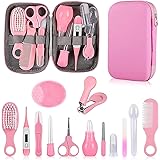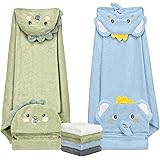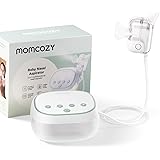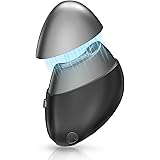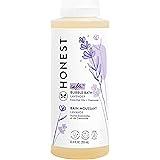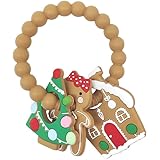Did you know that an estimated 60% of new parents report feeling overwhelmed by the sheer volume of baby items and the challenge of keeping them organized? Setting up a nursery is often pictured as a pristine, perfectly curated space, but as any seasoned parent will tell you, a beautiful nursery must also be a functional one. The video above offers a fantastic starting point, sharing practical, real-world hacks that transform a merely pretty baby room into an efficient hub for new parenthood. Let’s delve deeper into these essential strategies, focusing on how smart **nursery organization** can truly make your life easier.
Mastering Your Diaper Changing Station & Dresser Organization
The foundation of any practical baby room starts with an effective diaper changing station. Our video host wisely champions the dresser over a traditional changing table, and this comparison holds substantial merit. A dresser, acting like a sturdy, adaptable chameleon, offers significantly more storage and transitions seamlessly with your child through different developmental stages, making it a sustainable choice for your child’s space.
On top of your dresser, simplicity reigns supreme. The video highlights the Skip Hop changing pad as a prime example of functionality and affordability, costing roughly half the price of popular alternatives like the KikaRoo Peanut Changer. This wipe-clean surface is a true ally during messy diaper changes, much like a non-stick pan in the kitchen simplifies cooking and cleanup. Keeping only essential items like wipes and creams within immediate reach ensures a smooth, uninterrupted changing process, minimizing the hunt for supplies.
Inside the dresser, the strategy becomes even more refined with adjustable drawer dividers. These dividers are like customizable walls, allowing you to create compartments tailored to your specific storage needs, regardless of your dresser’s dimensions. The taller design of these dividers, reminiscent of a “drawer within a drawer,” provides extra depth for storing various baby essentials, from burp cloths and creams to health supplies.
Furthermore, small bins nested within these divided sections act as micro-compartments, perfect for grouping items like bibs, hats, socks, and shoes. This layering of organization systems ensures that every tiny item has a designated home, preventing clutter and simplifying retrieval. It’s like creating a well-indexed library where every book is easy to find.
Consider the workflow of your diaper changing station. Placing diapers and creams on the side closest to your dominant hand, or directly opposite the changing pad, creates a fluid motion. This ergonomic approach saves precious seconds and mental energy during those frequent, sometimes frantic, diaper changes. Moreover, organizing drawers from most-used items at the top to least-used at the bottom is like designing a personal command center, ensuring your high-frequency items are always within an arm’s reach.
Streamlining Baby Clothes Organization: The No-Fold & Roll Methods
Clothing organization is often the biggest hurdle for new parents, as tiny garments multiply at an astonishing rate. The video introduces a revolutionary concept: the “no-fold method.” This hack, where clothes are simply laid vertically into drawers, is a game-changer for parents who find traditional folding of baby clothes to be an endless, finicky chore. It’s like transforming your drawer into a filing cabinet, allowing you to quickly browse and select outfits without disturbing perfectly stacked piles.
This method not only saves time but also maintains visibility, letting you see every item without rummaging. For those who prefer a slightly tidier look or as clothes grow larger, the rolling method offers a smart compromise. Rolling clothes is akin to rolling up sleeping bags for camping; it compresses items while keeping them neatly contained and visible. This approach becomes particularly effective as babies grow out of infant sizes into slightly larger, more manageable clothing pieces.
For hanging garments like cute outfits, matching sets, and dresses, the right tools are paramount. Velvet non-slip hangers, available affordably in packs of 30, are a must-have. These hangers prevent delicate baby clothes from sliding off, much like an adhesive keeps a poster firmly on a wall. Additionally, pants hangers are invaluable for hanging entire outfits together, creating a cohesive wardrobe display that simplifies daily dressing decisions.
Finally, size dividers are unsung heroes of nursery closet organization. These simple, inexpensive tools, often found on Amazon, categorize clothing by size, helping you instantly identify what fits now, what’s been outgrown, and what future sizes are waiting. It’s like having a clear roadmap for your baby’s ever-changing wardrobe, preventing the frustration of pulling out clothes that are either too big or too small.
Smart Strategies for Outgrown & Future Clothing and Toy Storage
Babies grow at an incredible pace, often outgrowing items one by one rather than by entire size categories. This reality makes an interim storage solution crucial for outgrown clothing. Dedicating a temporary bin or basket in the closet for these items eliminates the need for frequent trips to long-term storage areas. Think of it as a holding bay, collecting items until the bin is full, then prompting a single, efficient trip to the attic or storage unit.
When it comes to long-term storage, selectivity is key. The video wisely advises keeping only favorite, most-used, and versatile items, especially if you plan for more children. Prioritize seasonless and gender-neutral basics like sleepers and onesies, which are like classic wardrobe staples that transcend trends. This discerning approach prevents future clutter and ensures you’re storing only what is truly valuable, rather than a mountain of forgotten items.
Conversely, a system for storing future sizes and toys is equally important. Baskets or cube shelves are excellent for housing hand-me-downs, gifts, and larger-sized clothing or toys that your baby isn’t yet ready for. This approach is like an anticipation zone, keeping future treasures safely tucked away until the opportune moment. When your baby reaches a new milestone, you can simply “shop” from this stored collection, providing fresh interest without constant purchases.
Efficient Backstock Management and Essential Organization Tips
Effective backstock management can significantly reduce mental load. The advice to keep only one of each essential item (like diaper rash cream, wipes, or current-sized diapers) at the changing station, and store the rest as backstock, is a brilliant time-saver. This system functions like a well-stocked store shelf, presenting only one option at a time to prevent confusion and unnecessary openings of multiple products. It ensures that when you’re half-asleep in the middle of the night, grabbing a diaper or cream requires zero brain power.
Labels are another simple yet powerful tool for **nursery organization**. Labeling drawers, bins, and shelves means that anyone—you, your partner, or a helpful grandparent—can quickly find and put away items. This system transforms your nursery into an intuitive space, where everything has an identifiable home, much like a well-labeled pantry promotes cooking efficiency.
Beyond drawers and closets, wall space offers untapped potential. Wall hooks or accordion racks are excellent for storing miscellaneous baby items such as wraps, carriers, or even a diaper bag. This vertical storage solution is like adding extra shelves without taking up valuable floor space, keeping often-used items accessible and off the ground. The video notes that keeping the diaper bag right beside the changing table, even if it’s on the floor, can be incredibly practical for quick reloads before heading out.
Optimizing Book and Toy Storage for Playful Living
When it comes to books, considering where you read most is a crucial organizational step. For many families, the living room is the primary reading spot, making it sensible to store the majority of baby books there. This allows for spontaneous story times without a trek to the nursery. In the nursery itself, floating wall shelves can be a charming way to display a select few books, turning them into decorative elements. However, be mindful of shelf design; shelves with a higher support or a top brace are essential to prevent books from toppling over, unlike decorative shelves that serve primarily aesthetic purposes.
Toy organization, much like book storage, benefits from a “play where you live” philosophy. Storing the majority of toys in common living areas, rather than solely in the nursery, promotes inclusive family play. A single, aesthetically pleasing basket in the living room can house a play blanket and a curated selection of toys. This approach aligns with philosophies like “Simplicity Parenting,” which advocates for fewer, open-ended toys to foster deeper engagement and creativity. Think of it as providing a small, thoughtfully chosen “play buffet” rather than an overwhelming toy aisle.
The sentiment that “the less you have, the easier it is to keep organized” holds immense truth, especially for babies who genuinely don’t need a mountain of toys. As your baby grows, expanding toy storage to accessible bins in a closet allows for a rotating selection, keeping play exciting without constant clutter. This Montessori-style approach of open-ended, easily accessible toys empowers children to choose and engage independently, fostering a love for play and learning within a well-organized **nursery organization** system.


